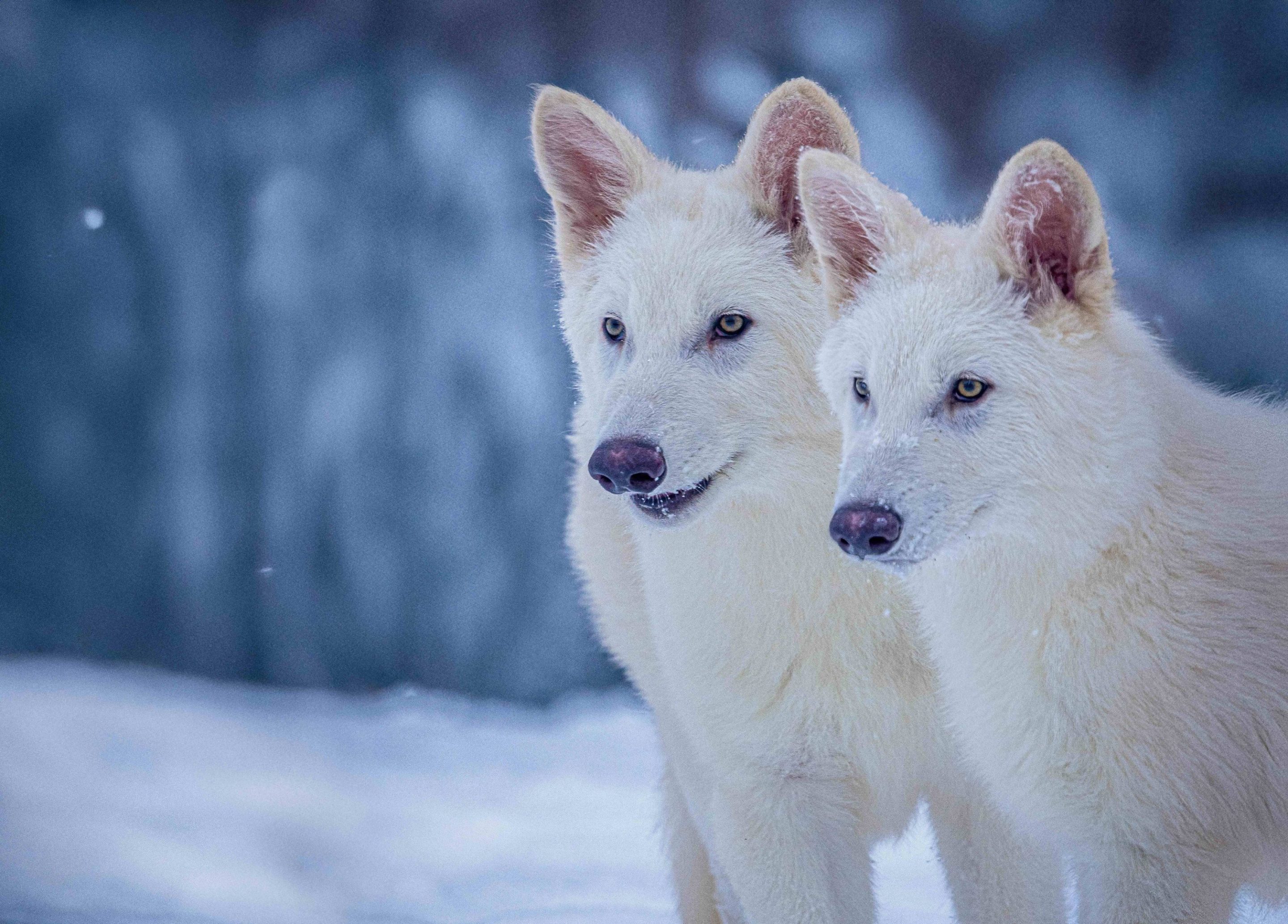On April 7, the New Yorker and Time ran nearly identical stories that might be better described as press releases for the de-extinction company Colossal Biosciences. The two stories differed slightly: The New Yorker's headline proclaimed "The Dire Wolf Is Back," whereas Time's announced "The Return of the Dire Wolf." While the New Yorker led with a photo of a cub, Time led with a photo of a fully grown wolf. But the effect of these stories was the same, both creating the impression that the dire wolf is indeed back after 10,000 years of extinction.
What these stories seemed less interested in was the fact that the dire wolf was, in fact, not at all back, nor will it return anytime soon. Colossal is a company that runs on PR stunts, and the latest hoopla instigated a wave of criticism from scientists seeking to set the record straight: The "dire wolf" on the cover of these glossy magazines was not a dire wolf, meaning an individual of the extinct canine species Aenocyon dirus. Instead, the "dire wolf" was a modern wolf with 20 genetic edits, none of which involved the splicing of actual dire wolf DNA. "It’s not a dire wolf. It’s misleading to call it that," Vincent Lynch, an evolutionary biologist at the University at Buffalo, told Chemical and Engineering News. “I can't explain how pissed off it made me, because they're still saying this stuff, and they know it to not be true.”
This week, Michael Le Page at New Scientist published a more recent interview with Beth Shapiro, Colossal's chief scientist, who appeared to concede to critics' points that the company had not actually de-extincted a dire wolf. "It’s not possible to bring something back that is identical to a species that used to be alive. Our animals are grey wolves with 20 edits that are cloned," Shapiro told New Scientist. "And we’ve said that from the very beginning. Colloquially, they’re calling them dire wolves and that makes people angry."
I don't disagree with Shapiro's first point: It is not currently possible to bring back something that is identical to an extinct species. But I disagree wholeheartedly with her second. Has Colossal said, from the beginning, that de-extinction is impossible, and that the dire wolf is not a real dire wolf? Of course it hasn't. Le Page, to counter, cites Colossal's April 7 press release: "Colossal Announces World's First De-Extinction: Birth of Dire Wolves."
This whole strategy—making enormous claims to guarantee wall-to-wall coverage in the press, only to later quietly correct such claims in an interview with a single publication—is not just dishonest, but also patronizing. Shapiro's defense of Colossal's "colloquial" usage of dire wolves is not intellectually serious, as Colossal relies on the obfuscation of how, exactly, they are defining dire wolves in order to garner press coverage. Shapiro's inclusion of herself among the "we" that has been saying this from the beginning versus her exclusion of herself from the "they" that is calling them dire wolves is frustrating, too. She is Colossal's chief scientist, one of their major talking heads, and an expert whose body of real scientific work lends credence to Colossal's entire undertaking.
An exceedingly generous observer might chalk up this divergence to the perennial conflict between scientists and their PR machines, which are often interested in making research sound more world-important, innovative, and impactful—thus garnering attention and, downstream of that, funding—than the researchers themselves might comfortably claim. It would not be surprising if Colossal's PR department were exerting pressure on Shapiro. But she has, from the beginning, fallen in line. Back in April, Antonio Regalado from MIT Technology Review asked Shapiro to call the creature a dire wolf. She hesitated before saying: "It is a dire wolf ... I feel like I say that, and then all of my taxonomist friends will be like, 'OK, I’m done with her.' But it’s not a gray wolf. It doesn’t look like a gray wolf."
The "dire wolves," being white, may not look like gray wolves, but they don't necessarily look like dire wolves, either. Although scientists do not know for certain, their best guess has historically been that Aenocyon dirus was red. When a group of scientists published a 2021 paper revealing dire wolves were not actually wolves, they commissioned a scientific illustration depicting dire wolves as large-headed reddish brown canids. According to Colossal, the dire wolf DNA they sequenced suggested dire wolves were, conveniently, pale, just like the dire wolf Ghost in Game of Thrones. This, too, has the guise of another PR ploy from a company that included George R. R. Martin on its dire wolf preprint.
For now, Colossal's strategy of obfuscation is working; the company is valued at more than $10 billion. So I and many other science journalists will reluctantly wait for Colossal's next big media frenzy: a de-extincted Steller's sea cow that is actually just a heavyset manatee, perhaps.
I do not think this strategy is sustainable. It seems to me that Shapiro and Colossal are trying to have their cake and eat it too. They want the breathless, unquestioning coverage from all the mainstream outlets who are unprepared to ask the right questions about Colossal's gambit, or willing to skip those questions in exchange for an exclusive. And they want the veneer of scientific credibility that can be scraped back, perhaps, by ceding some ground to the growing number of researchers eager to call a dire wolf a red herring. But talking out of both sides of your mouth is untenable. Pretty soon people catch on. Pretty soon people realize that a mouse is not a mammoth.







